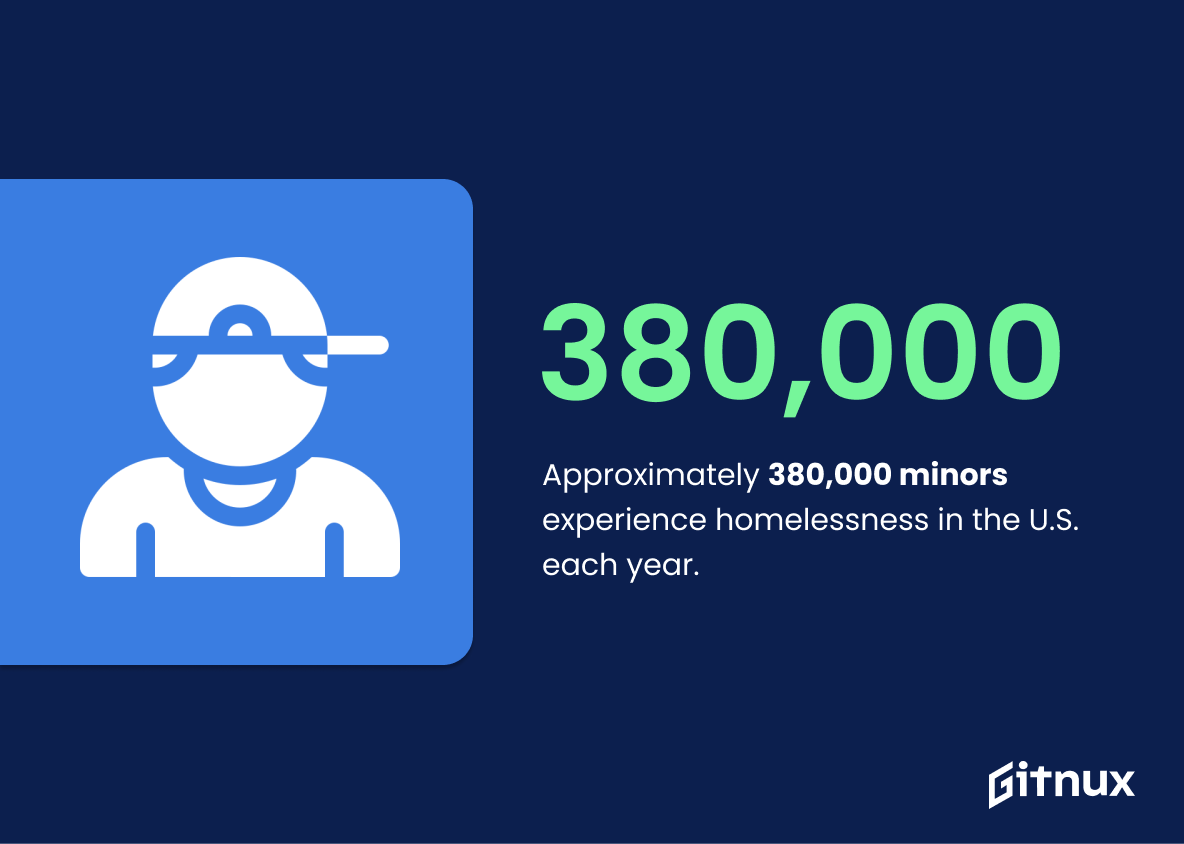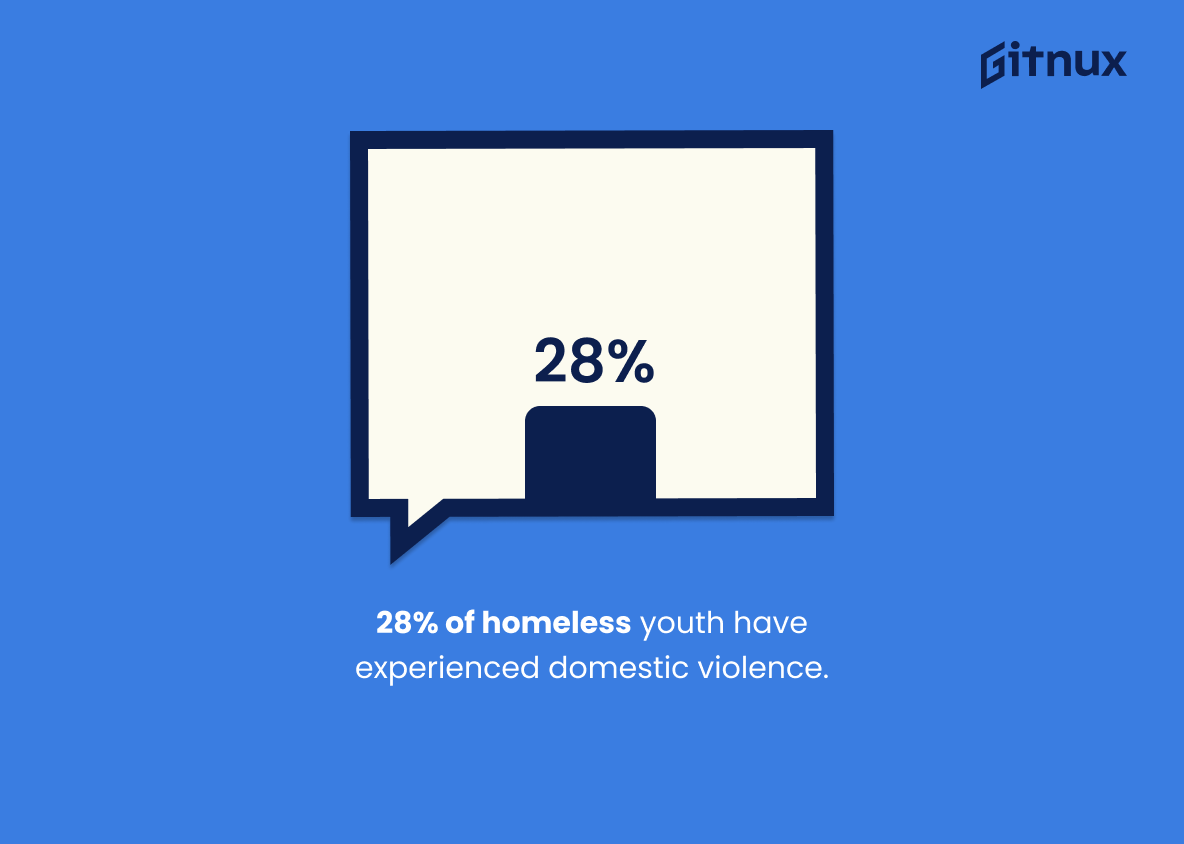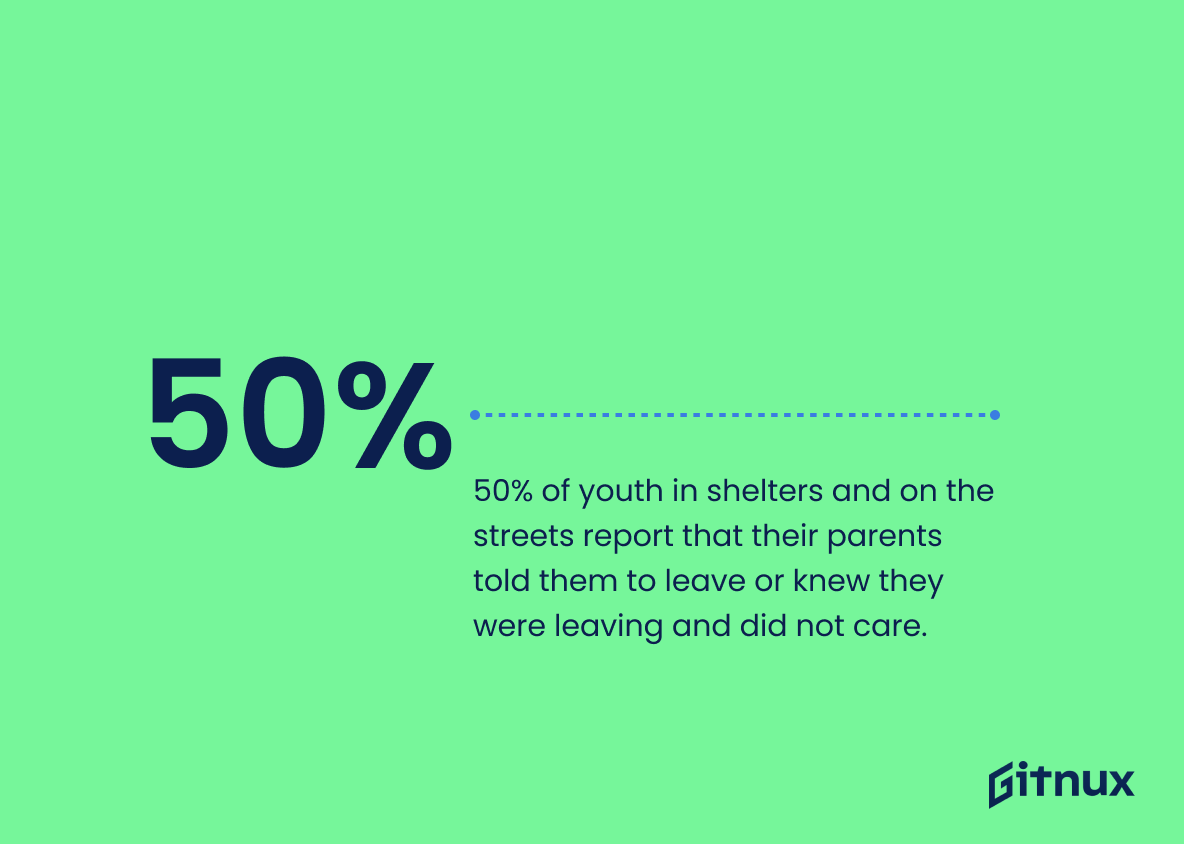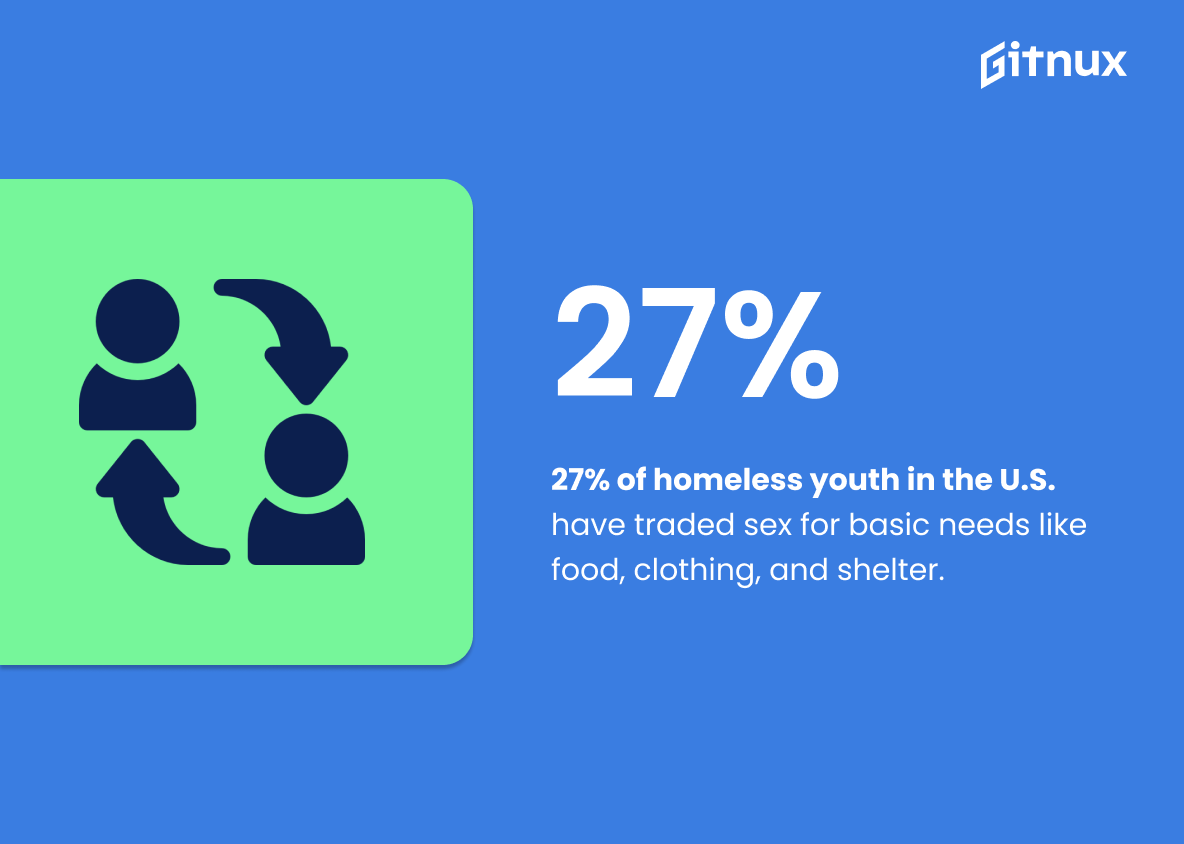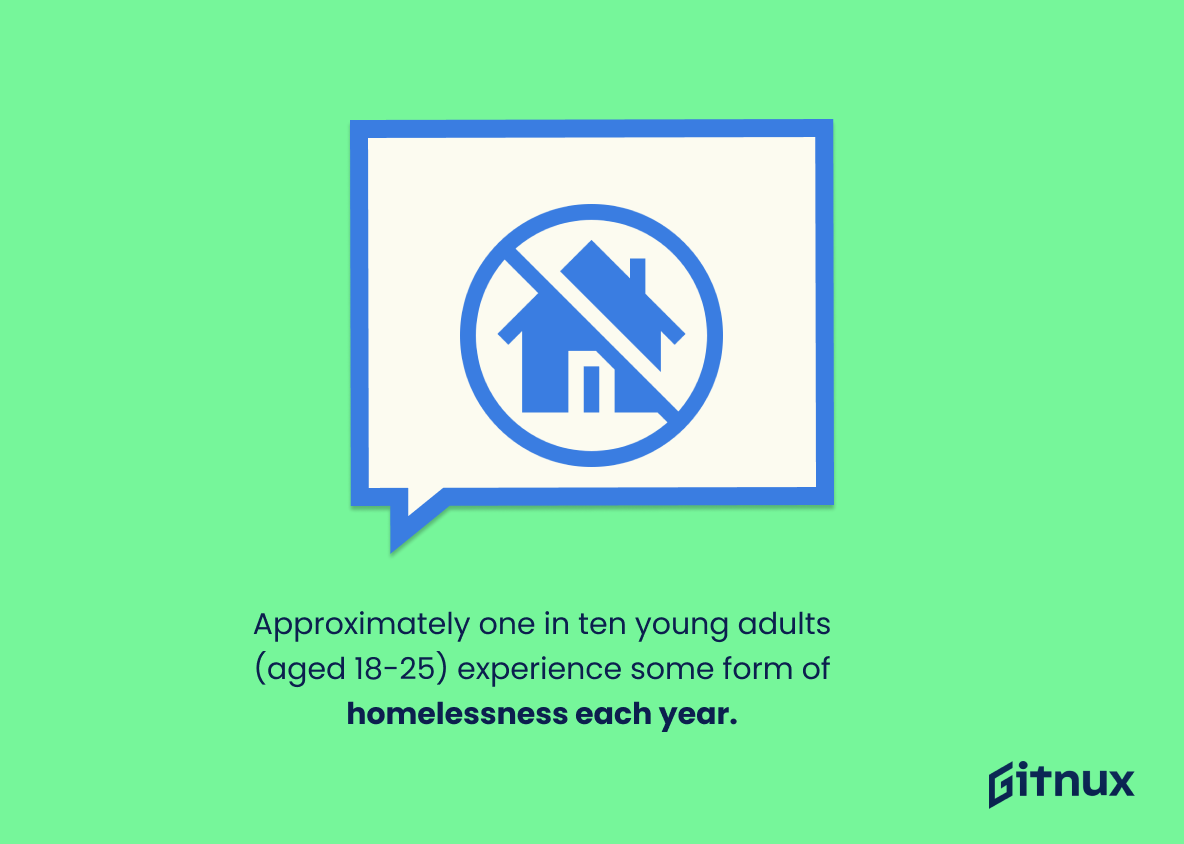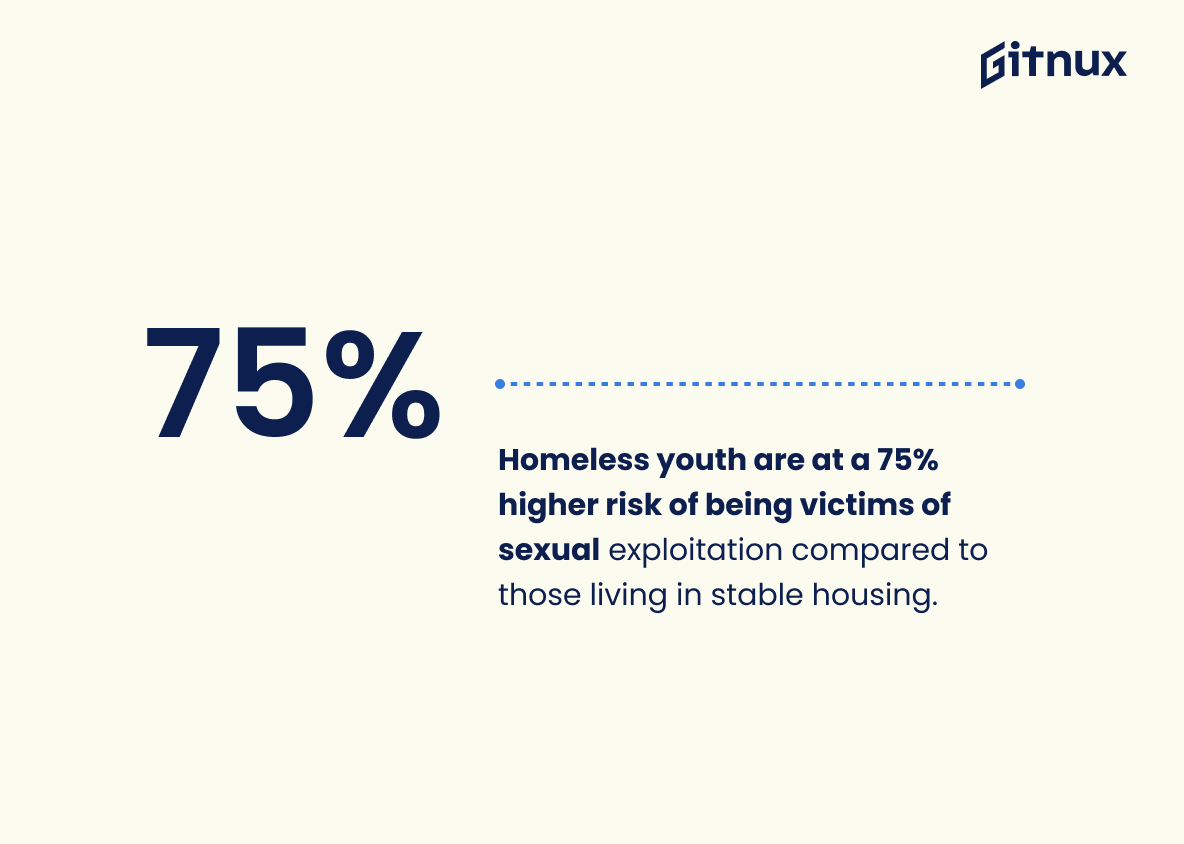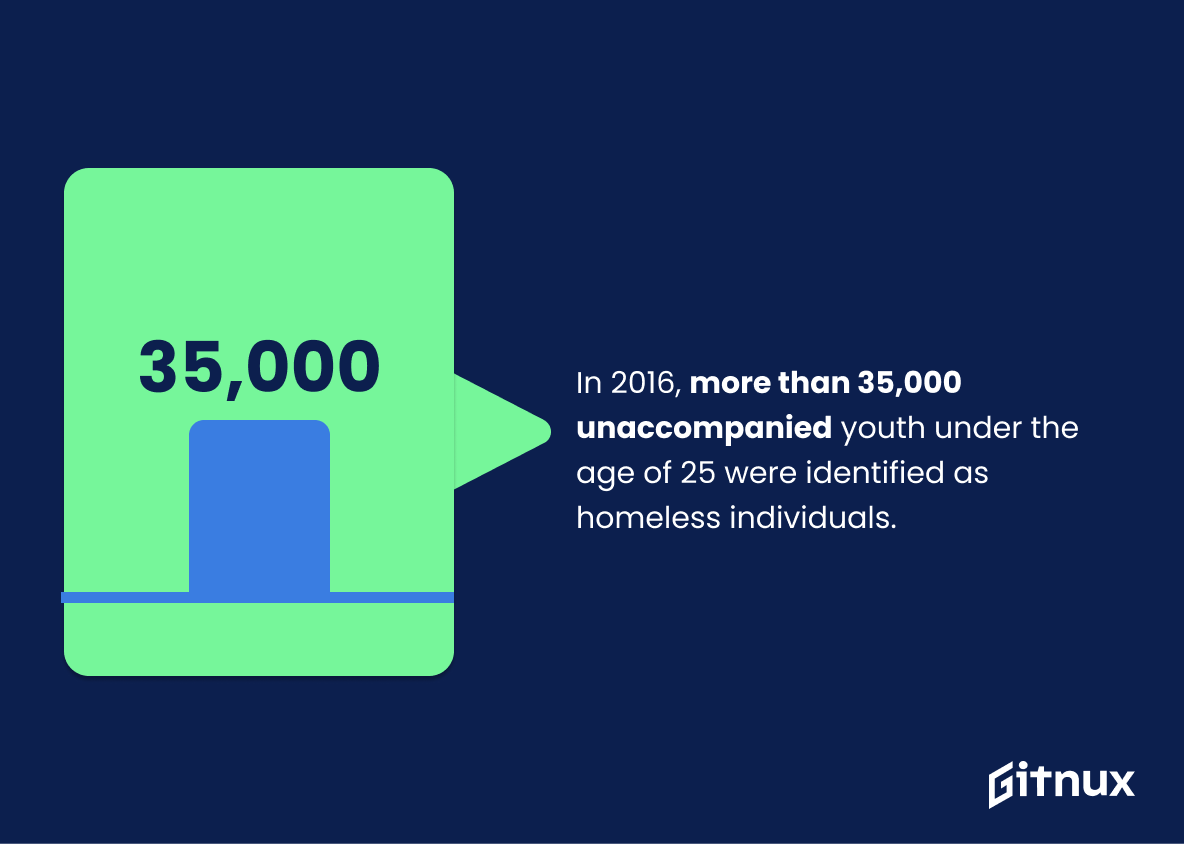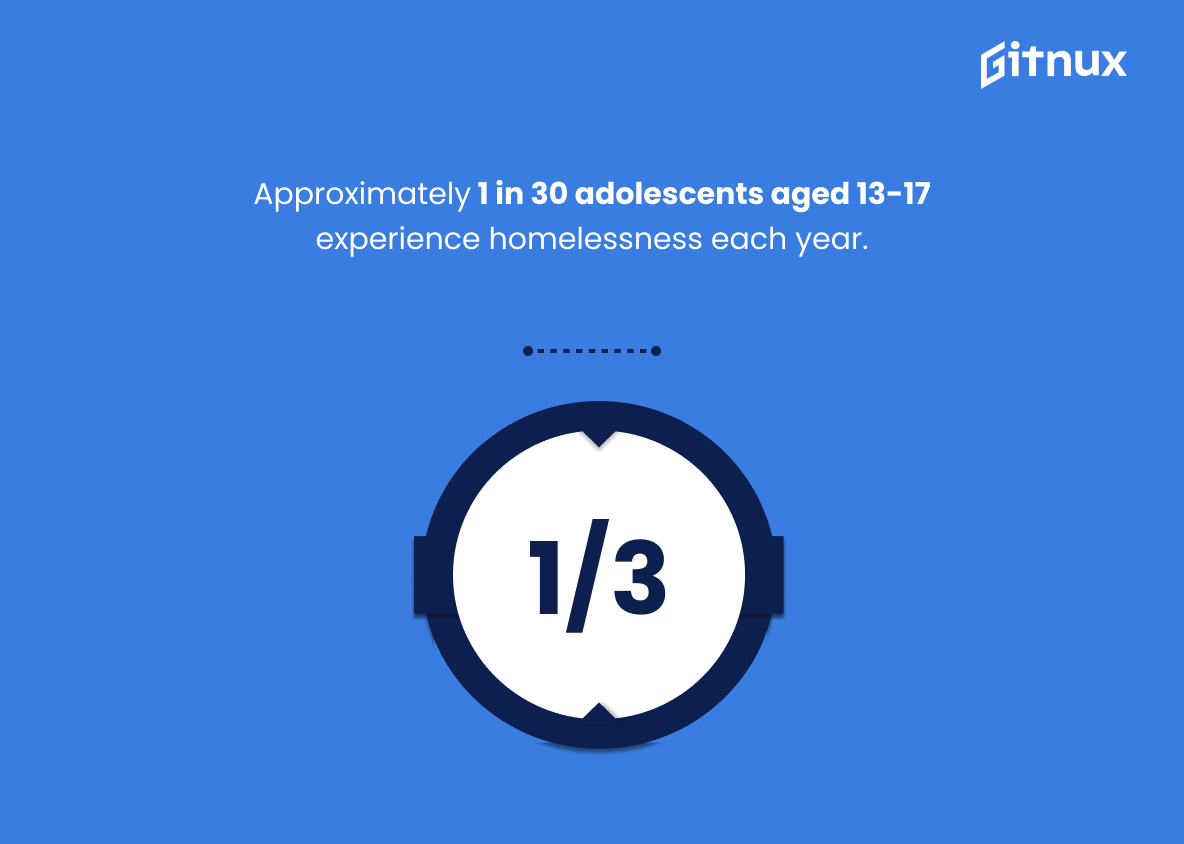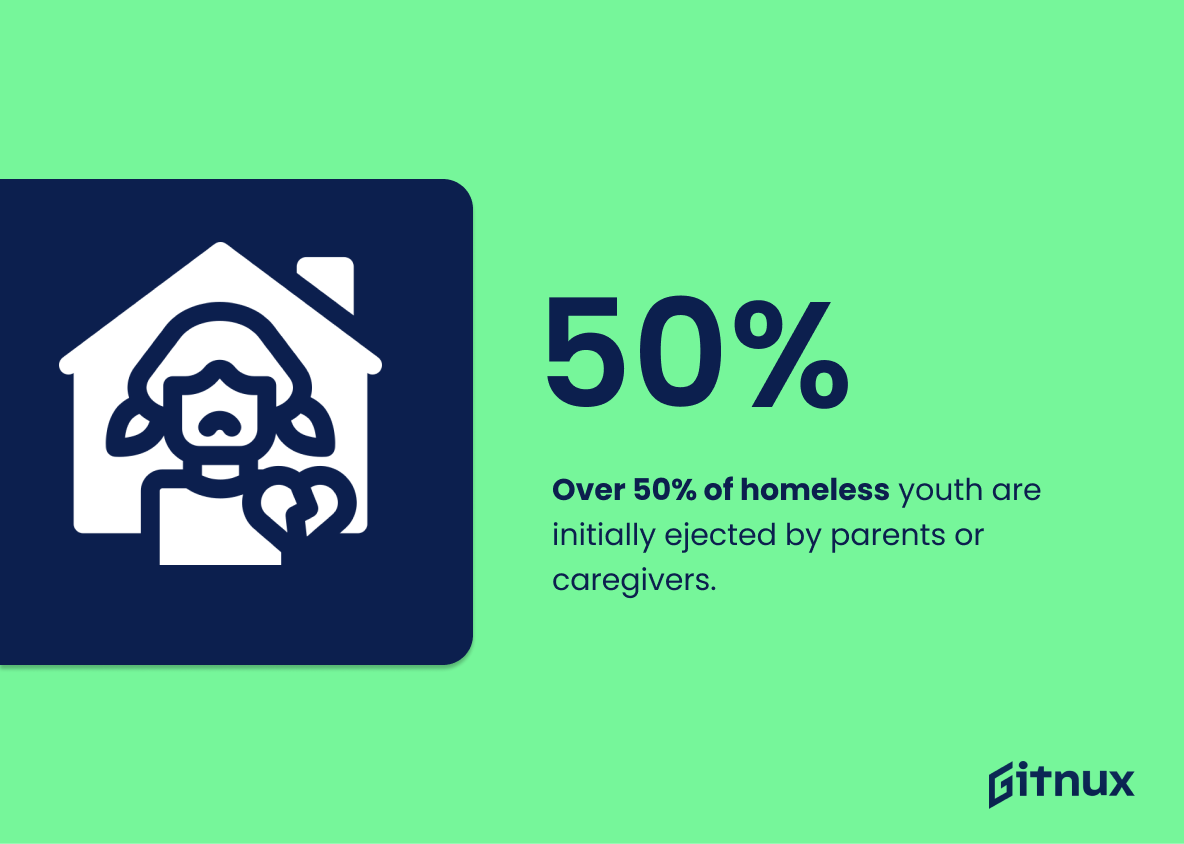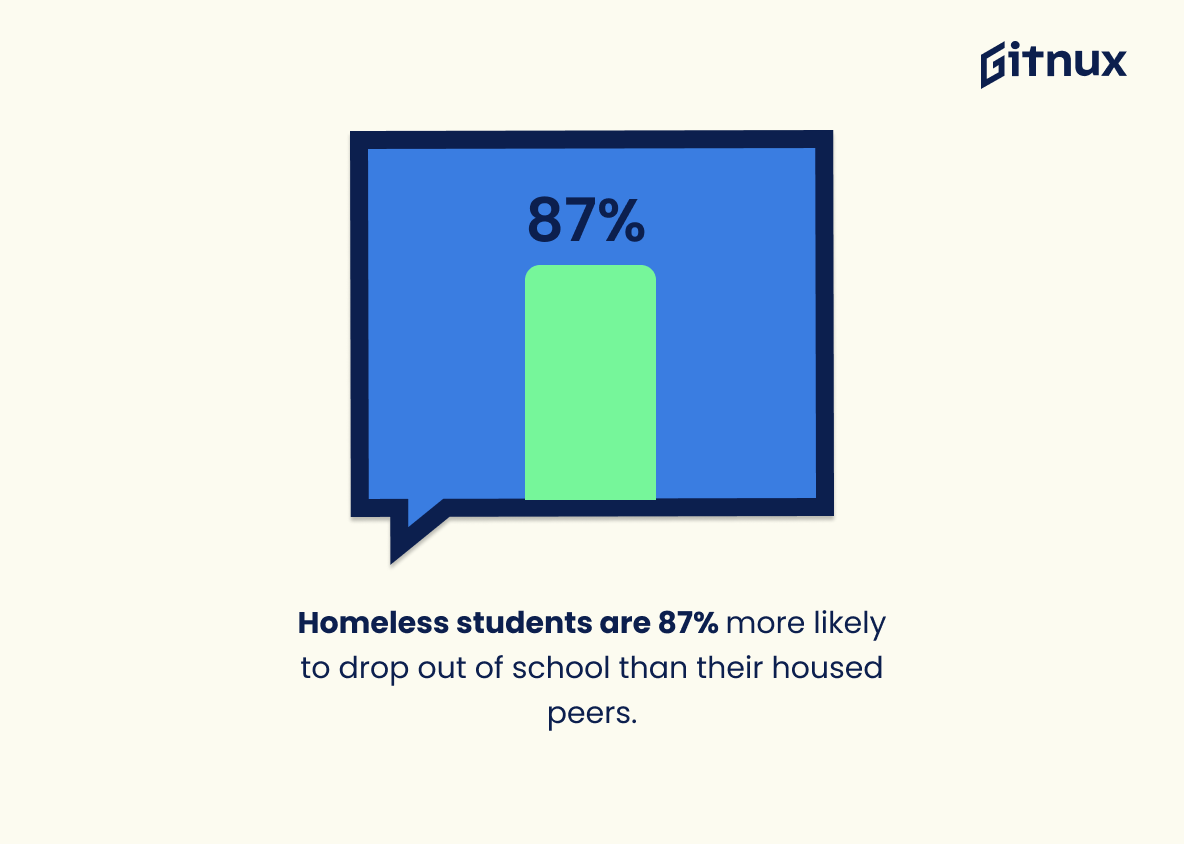The statistics surrounding homeless youth in the United States are staggering. Approximately 1.6 million young people experience homelessness each year, and 40% of them identify as LGBTQ+. 46% report being physically abused by a family member, while 28% have experienced domestic violence. 50% of homeless youth aged 16 and older drop out of school, with black and African American youth 83%, more likely to be affected than their white counterparts. 5,000 unaccompanied minors die annually due to assault or suicide; over half suffer from prolonged periods hunger; 27% trade sex for basic needs like food or shelter; 63 % were exposed to violence within their families before leaving home; one in ten 18-25 year olds experience some form of homelessness each year; 55 % have been diagnosed with at least one mental health disorder – 75 % higher risk for sexual exploitation compared to those living in stable housing – 35 000 identified as homeless individuals under 25 years old – 17 percent make up overall US population – 87 percent more likely not finish high school than housed peers . These facts paint an alarming picture about the state of our nation’s most vulnerable citizens: its children who lack safe homes and supportive environments necessary for healthy development into adulthood.
This statistic is a stark reminder of the reality that far too many young people in the United States are facing: homelessness. It is a sobering reminder of the struggles that these young people are facing, and the need for greater awareness and action to help them.
46% of homeless youth report being physically abused by a family member.
This statistic is a stark reminder of the harsh realities that homeless youth face. It highlights the fact that many of these young people have experienced physical abuse from a family member, a situation that can have long-term psychological and emotional effects. It is a reminder that homelessness is often the result of a complex set of circumstances, and that these young people need our support and understanding.
Homeless Teenagers Statistics Overview
Approximately 380,000 minors experience homelessness in the U.S. each year.
This statistic is a stark reminder of the reality that hundreds of thousands of minors in the U.S. are facing homelessness each year. It serves as a powerful reminder of the need to address the issue of homelessness among teenagers and to provide support and resources to those in need.
28% of homeless youth have experienced domestic violence.
This statistic is a stark reminder of the harsh realities that homeless youth face. It highlights the prevalence of domestic violence in the lives of homeless teenagers, and the need for greater support and resources to help them cope with the trauma of such experiences. It also serves as a call to action for those who are in a position to help, to ensure that homeless youth are provided with the necessary support and resources to help them heal and move forward.
50% of youth in shelters and on the streets report that their parents told them to leave or knew they were leaving and did not care.
This statistic is a stark reminder of the harsh reality that many homeless teenagers face. It highlights the fact that for many of these young people, their own families are not a source of support and stability, but instead a source of abandonment and neglect. This statistic serves as a reminder that homelessness is not just a problem of poverty, but also of family dynamics and the lack of support that many young people experience.
Black and African American youth are 83% more likely and Hispanic youth are 33% more likely to experience homelessness compared to their white counterparts.
This statistic is a stark reminder of the disproportionate impact homelessness has on minority youth. It highlights the need for greater attention to be paid to the unique challenges faced by Black and African American and Hispanic youth when it comes to homelessness. It is a call to action to ensure that these communities are provided with the resources and support they need to prevent and address homelessness.
Approximately 5,000 unaccompanied youth die each year as a result of assault, illness, or suicide.
This statistic is a stark reminder of the harsh realities that homeless teenagers face every day. It highlights the immense struggles they endure, from the physical and mental health issues that come with living on the streets, to the dangers of assault, illness, and suicide. It is a sobering reminder of the need for more resources and support for homeless teenagers.
27% of homeless youth in the U.S. have traded sex for basic needs like food, clothing, and shelter.
This statistic is a stark reminder of the dire circumstances that homeless youth in the U.S. are facing. It highlights the fact that many of these young people are being forced to make difficult decisions in order to survive, such as trading sex for basic necessities. This statistic is a powerful reminder of the need for more resources and support for homeless youth in the U.S.
Approximately one in ten young adults (aged 18-25) experience some form of homelessness each year.
This statistic is a stark reminder of the prevalence of homelessness among young adults. It highlights the fact that homelessness is a real issue that affects a significant portion of the population, and that it is not something that can be ignored. It is a call to action for those who are in a position to help, and a reminder that there are many young adults out there who need our support.
Homeless youth are at a 75% higher risk of being victims of sexual exploitation compared to those living in stable housing.
This statistic is a stark reminder of the vulnerability of homeless youth, and the heightened risk they face of being victims of sexual exploitation. It serves as a call to action to ensure that homeless teenagers are provided with the resources and support they need to stay safe and secure.
In 2016, more than 35,000 unaccompanied youth under the age of 25 were identified as homeless individuals.
This statistic is a stark reminder of the reality of homelessness among young people. It highlights the fact that thousands of young people are facing the harsh realities of homelessness, and that this is an issue that needs to be addressed. It is a call to action for those who are in a position to help, and a reminder that this is a problem that needs to be taken seriously.
Approximately 1 in 30 adolescents aged 13-17 experience homelessness each year.
This statistic is a stark reminder of the prevalence of homelessness among adolescents aged 13-17. It serves as a reminder that homelessness is a real issue that affects a significant portion of the population, and that it is an issue that needs to be addressed.
Over half of homeless youth become homeless for the first time because they were asked to leave by a parent or caregiver.
This statistic is a stark reminder of the harsh reality that many homeless teenagers face. It highlights the fact that many of these young people are not only dealing with the struggles of homelessness, but also the trauma of being rejected by their own family. This statistic serves as a reminder that homelessness is not just an issue of poverty, but also of family dynamics and the need for support and understanding.
Homeless students are 87% more likely to drop out of school than their housed peers.
This statistic is a stark reminder of the immense challenges homeless teenagers face in their pursuit of education. It highlights the need for greater support and resources to ensure that homeless students have the same opportunities to succeed in school as their housed peers. It also serves as a call to action for those in positions of power to take steps to reduce the number of homeless teenagers and provide them with the necessary resources to stay in school.
Conclusion
The statistics presented in this blog post demonstrate the alarming prevalence of homelessness among young people in the United States. Approximately 1.6 million youth experience homelessness each year, with 40% identifying as LGBTQ+, 46% reporting physical abuse by a family member, and 28% experiencing domestic violence. Furthermore, 50% of homeless youth aged 16 and older drop out of school while 83-33%, respectively more likely to be Black or African American or Hispanic than their white counterparts. Additionally, 5,000 unaccompanied minors die annually due to assault illness or suicide; over half report prolonged periods hunger; 27 percent have traded sex for basic needs like food clothing and shelter; 63 percent were exposed to violence within their families before leaving home; one in ten 18-25 year olds experience some form of homelessness yearly; 55 percent are diagnosed with at least one mental health disorder making them 75 % more likely victims sexual exploitation compared those living stable housing ; 35 thousand unaccompanied under 25 identified individuals 2018 17 % overall population 87 % dropout rate housed peers . These facts highlight how much work is needed to address this issue so that all young people can live safe secure lives free from fear poverty discrimination .
References
0. – https://www.urban.org
1. – https://www.dornsife.usc.edu
2. – https://www.hudexchange.info
3. – https://www.covenanthouse.org
4. – https://www.voicesofyouthcount.org
5. – https://www.uwaylc.org
6. – https://www.youth.gov
7. – https://www.safeshores.org
8. – https://www.awayhomeamerica.org
9. – https://www.ncsl.org
10. – https://www.schoolhouseconnection.org
